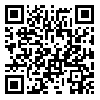Sat, Dec 13, 2025
Volume 11, Issue 1 (Winter 2021)
PTJ 2021, 11(1): 1-12 |
Back to browse issues page
Download citation:
BibTeX | RIS | EndNote | Medlars | ProCite | Reference Manager | RefWorks
Send citation to:



BibTeX | RIS | EndNote | Medlars | ProCite | Reference Manager | RefWorks
Send citation to:
Daneshmandi H, Norasteh A A, Zarei H. Balance in the Blind: A Systematic Review. PTJ 2021; 11 (1) :1-12
URL: http://ptj.uswr.ac.ir/article-1-442-en.html
URL: http://ptj.uswr.ac.ir/article-1-442-en.html
1- Department of Corrective Exercise and Sport Injuries, Faculty of Physical Education and Sports Sciences, University of Guilan, Rasht, Iran.
Abstract: (6073 Views)
Purpose: This paper reviews the studies on balance in the blind.
Methods: The paper comprehensively reviewed studies on balance in the blind from the following databases: PubMed, MEDLINE, Web of Science, ScienceDirect, Cochrane Central Register of Controlled Clinical Trials, Google Scholar, and Scopus, from 2001 to 2019. Also, other available papers were examined.
Results: Out of 35 evaluated studies, 32 articles were fully represented and the rest were only summarized. These articles covered two issues: 1) balance adaptation in the blind, 2) the effects of training protocols on the balance in the blind.
Conclusion: The blind suffer from poor balance. However, they tend not to differ from normal people, when sufficient data from the vestibular and proprioception systems are available. Also, balance in the blind improves by age, which increases the efficiency and maturity of vestibular and proprioception systems. The blind tend to be more reliant on the hip than ankle strategy. All the training protocols reviewed in this paper have positively affected balance in the blind. Nevertheless, it was impossible to determine the most efficient protocol, and further qualitative studies are required for this purpose.
Methods: The paper comprehensively reviewed studies on balance in the blind from the following databases: PubMed, MEDLINE, Web of Science, ScienceDirect, Cochrane Central Register of Controlled Clinical Trials, Google Scholar, and Scopus, from 2001 to 2019. Also, other available papers were examined.
Results: Out of 35 evaluated studies, 32 articles were fully represented and the rest were only summarized. These articles covered two issues: 1) balance adaptation in the blind, 2) the effects of training protocols on the balance in the blind.
Conclusion: The blind suffer from poor balance. However, they tend not to differ from normal people, when sufficient data from the vestibular and proprioception systems are available. Also, balance in the blind improves by age, which increases the efficiency and maturity of vestibular and proprioception systems. The blind tend to be more reliant on the hip than ankle strategy. All the training protocols reviewed in this paper have positively affected balance in the blind. Nevertheless, it was impossible to determine the most efficient protocol, and further qualitative studies are required for this purpose.
Type of Study: Research |
Subject:
General
Received: 2020/02/16 | Accepted: 2020/03/3 | Published: 2021/01/1
Received: 2020/02/16 | Accepted: 2020/03/3 | Published: 2021/01/1
Send email to the article author
| Rights and permissions | |
 |
This work is licensed under a Creative Commons Attribution-NonCommercial 4.0 International License. |






